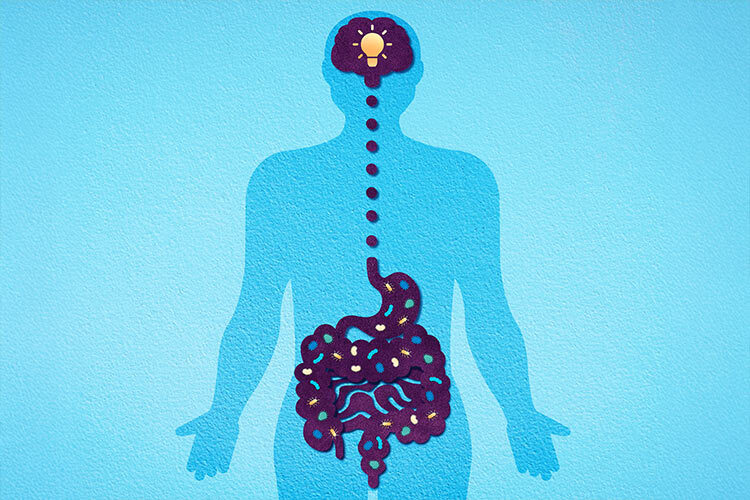Natural pigments have become increasingly popular in recent years as artificial dyes have been associated with harmful effects on our health and the environment. Especially in the pharmaceutical, textile, and food sectors, its high demand has increased its market value, and it is estimated that by 2032, it could reach almost 10 billion dollars.
Additionally, natural pigments are a promising option to replace synthetic ones with biological properties that can help prevent and treat different conditions.
“In Mexico, we have a great variety of vegetables and organisms that can serve as sources of natural pigments,” says Diego Luna-Vital, research professor at the Healthy Food Unit of the Institute for Obesity Research at Tec de Monterrey, in an interview with TecScience.
With this in mind, the expert has dedicated much of his career to extracting and characterizing natural compounds that can be used as additives, colorants, and organic food ingredients.
Recently, together with his team, he extracted anthocyanins from purple corn- a group of water-soluble plant pigments− which help create natural dyes of reddish tones.
These pigments act as antioxidants, so blueberries, raspberries, or blackberries −that contain them naturally− are recommended as some of the best foods to maintain a healthy brain.
“We obtain a purple powder that turns red when added to acid food,” explains Luna-Vital, who points out that the products to which they plan to add it are drinks, yogurt, cream cheese and gelatin, to name a few.
Not only could the dye help increase consumer acceptance of food, but it could also help treat metabolic conditions such as obesity and type 2 diabetes.
Purple Maize Pigment: What Are Its Medical Applications?
Anthocyanins can reduce oxidative stress by directly neutralizing excess free radicals, a type of unstable molecule that can result in inflammation or cellular damage when too much is produced −by smoking or having a high-fat diet, for example−.
“This ability is due to their chemical structure, which responds to their main function in the plant: protecting it from UV rays and preventing it from burning,” explains the researcher.
By testing the pigment in the liver, pancreas, and pre-adipocyte cells, they have found that the pigment can inhibit the activity of lipase, an enzyme released by the pancreas to help the body absorb fat, which has been associated with metabolic alterations.
Also, it can reduce blood glucose levels, as well as modulate lipid and carbohydrate metabolism.
In an animal model, where there was a control group, an obese group without treatment, an obese group with treatment of 200 milligrams (mg) of natural pigment, and another obese group with treatment of 500 mg, they observed a prevention of 20 to 25% of body weight gain in the latter group.
“In the future, we want to advance to a clinical model where we can test it in humans and thus know in what concentrations and for how long they should be consumed to obtain these benefits,” says Luna Vital. The treatment in animals consisted of administering a daily dose −of 200 mg or 500 mg− for one month.
Once they have this information, the idea would be to combine the consumption of foods such as raspberries, blackberries, blueberries, and strawberries with their pigmented foods to achieve the necessary amount of anthocyanins.
How is the Pigment Obtained, and What Are the Challenges to Reaching the Industry?
To extract it, the researchers used water at high pressures, managing to break the plant cells so that they released the pigment. “Using solvents, such as ethanol, to obtain them would get us into a lot of trouble if we want to obtain a safe ingredient,” says the expert.
This puts them in an advantageous position in the market since, nowadays, extraction methods that do not involve these types of substances are preferred. However, they still face some challenges, the main one being ensuring a shelf life of at least one year for their pigment, without modifying the taste, texture and smell of the pigmented food.
“Because anthocyanins are so reactive, they are also very sensitive and degrade very easily,” says Luna Vital.
Initially, the pigment had a half-life of three weeks, meaning that after that time half of the color had been lost. Using pigment modification with enzymes increased shelf life to four months, but the process is expensive and difficult to scale.
Their next step is to try microencapsulation with vegetable proteins obtained from legumes to reach the year of shelf life. If the product is also packaged in a container that blocks light from entering and is kept refrigerated, the chances of lasting longer increase greatly.
While they continue in their mission to obtain an accessible and easy-to-produce natural pigment, the researcher invites the population to consume foods that naturally contain this type of pigment: “Eat everything that is red, purple, blue, or pink that comes across your path,” he concludes.
Were you interested in this story? Do you want to publish it? Contact our content editor to learn more marianaleonm@tec.mx
















